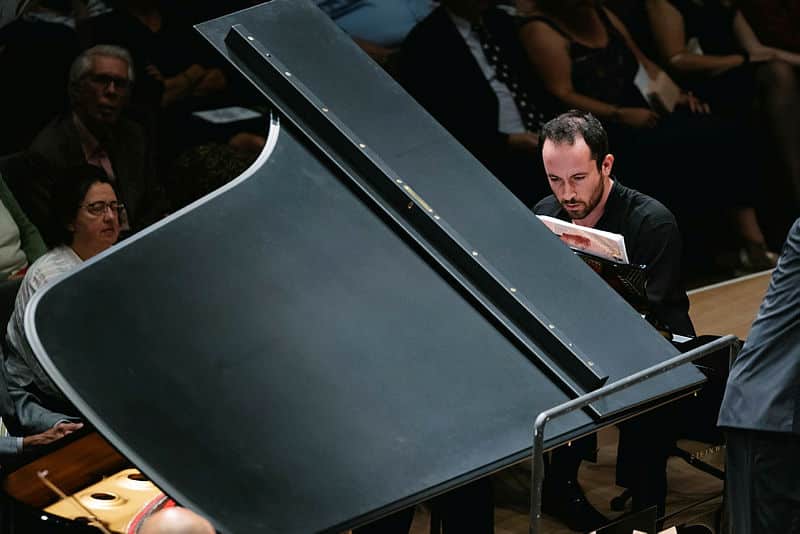11 worst-hit US orchestras
mainAnd while we’re compiling charts, here’s one from 247wallst.com on the American orchestras that are deepest in trouble.
Three in the list are already out of business and a fourth has filed for bankruptcy protection.
Here’s the link to the whole article.
And here’s the doom chart. Try not to choke:
1. Philadelphia Orchestra
- Founded: 1900
- Location: Philadelphia
- Operating Revenue: $33.08 million (FY 2010)
- Structural Deficit $14.5 million (FY 2010)
- Allison Vulgamore, CEO (Since 2009)
The Philadelphia Orchestra was driven to seek Chapter 11 last month for the same reasons many private companies do: its expenses ($46 million) were quite a bit higher than its revenue ($33.08 million). . ‘Although The Philadelphia Orchestra has no long-term debt, it is operating at a significant loss based upon declining ticket revenues, decreased donations, eroding endowment income, pension obligations, contractual agreements, and increased operational cost,” The Orchestra said in announcing the bankruptcy. A spat of emergency fundraising was expected to reduce that shortfall to $5 million, but that only covers this season. Undaunted, the Orchestra is planning a $160 million fundraising campaign. The orchestra was without a CEO for 10 months, which surely didn’t help matters.
2. Baltimore Symphony Orchestra
- Founded: 1916
- Location: Baltimore
- Total Revenue: $21.7 million (FY 2009)
- Deficit: $5.3 million
- Paul Meecham, CEO
The Baltimore Symphony Orchestra is faced with the unenviable problem of competing for corporate patrons and ticket sales with National Symphony Orchestra in neighboring Washington, D.C. Its struggles have only gotten worse as the economy slowed down. Charity Navigator shows it has a negative net asset value of $3.3 million. In 2010, musicians agreed to accept a pay freeze for this season and take a 16.6% pay cut for the next two seasons.
3. Columbus Symphony Orchestra
- Founded: 1951
- Location: Columbus, Ohio
- Total Revenue: $6.9 million (FY 2009)
- Surplus: $285,529
- William B. Conner, Jr., Executive Director
The Columbus Symphony Orchestra calls itself the only full-time professional orchestra in Northern Ohio. Unfortunately, its modest financial success has come at a steep price. In March 2010, the musicians agreed to $1.1 million in wage cuts through 2011. The organization’s board had threaten to shut its doors permanently unless wage concessions were made.
4. New York City Opera
- Founded: 1943
- Location: New York
- Total Revenue: $5.99 million (FY 2009)
- Deficit: $5 million (Current)
- George Steel, General Manager and Artistic Director
The New York City Opera was founded to make opera accessible to American audiences, perform new music and to give breaks to U.S. born singers. Think of it as an alternative to the Met. The current season is up in the air. We’re working very hard to get this institution on a sound financial footing,” Board Chairman Charles Wall told The New York Times that he is donating $2.5 million to help cover the deficit and seeking contributions. “The opera has ceded time to New York City Ballet, with which it shares the David H. Koch Theater, in exchange for a reduction in payments,” the paper says.
5. Houston Symphony
- Founded: 1913
- Location: Houston
- Operating Revenue: $8.72 million (2010)
- Deficiency From Operations (2010) $14.85 million
- Mark Hanson, CEO
In 2009, The Houston Symphony announced sweeping austerity measures including furloughing musicians and staff and reduce the pay of conductors to save $900,000. It didn’t seem to do much good. The organization’s annual report shows that its deficit in 2010 was $14.85 million, the highest it’s been since at least 2006. Revenues were at their lowest level since 2007. As of the 2009 fiscal year, the Orchestra had negative net assets of $16.1 million.
6. Detroit Symphony Orchestra
- Founded: 1914
- Location: Detroit
- Total Revenue: $23.58 million (FY 2009)
- Deficit: $11.89 million (FY 2009)
- Anne Parsons, CEO
The Detroit Symphony Orchestra has had a rough few months, including a six-month long musicians’ strike that was settled this month. According to Dynamic Arts Consulting, the DSO has been caught in an economic maelstrom since the start of the recession as Detroit’s auto industry fell into decline. Its finances are a mess as corporate support withered away. “The financial crisis of 2008 greatly affected the DSO, which subsequently lost $19 million in ticket sales and remains in default on the terms of its $54 million real-estate debt (to build Max M. Fisher Music Center and restore Orchestra Hall),” the company says. The rest of the season has been canceled.
7. Milwaukee Symphony Orchestra
- Founded: 1959
- Location: Milwaukee
- Total Revenue: $14.18 million (FY 2009)
- Deficit; $3.3 Million
- Maryellen H. Gleason, President & Executive Director
One the youngest symphonies in major cities, the Orchestra was hit with a steep drop-off in contributions during the last fiscal year because of the recession. Total revenue for the year was 16.5% below projections. According to the Journal Sentinel newspaper, the Orchestra is as ambitious as ever. “Belt-tightening and staff furlough days have not resulted in a reflexive lack of ambition or innovation,” it says. Nonetheless, the Symphony slashed $500,000 from its expenses for the 2011 fiscal year.
8. Syracuse Symphony Orchestra
- Founded: 1961
- Location: Syracuse, NY
- Total Revenue: n/a
- Debt: $5.5 Million
- Interim Executive Director Paul Brooks
The Orchestra has been in life support for a while. “Last summer the arts organization was close to collapse when it was without operating funds. An “angel investor” came to its rescue,” the Syracuse Post-Standard says. “In late January, it announced it faced a similar fate if it didn’t receive an immediate $375,000 to cover February expenses and needed a total of $1.75 million by Aug. 1 to continue its 50th anniversary season. The campaign, which included an orchestral staging of Led Zeppelin songs, fell short. “In plain terms, if there is to be another Symphony, it can start with a clean sheet of paper,” the Orchestra says on its website. The season was canceled, including a concert featuring world-renowned cellist Yo-Yo Ma.
9. New Mexico Symphony Orchestra
- Founded: 1932
- Location: Albuquerque, New Mexico
- Total Revenue: $4.06 million (FY 2009)
- Deficit: $1.45 million
- Ruth Silva-Hernández
Interim President/CEO
The New Mexico Symphony Orchestra filed for Chapter 7 bankruptcy protection on April 21. Like other orchestras, the New Mexico Symphony was caught in the twin vice grips of the economic slowdown and rising costs. Musicians are reportedly owed $800,000. It also was behind in its rent. The orchestra will cease to exist once the bankruptcy is completed.
10. Louisville Orchestra
- Founded: 1932
- Location: Louisville, KY
- Total Revenue: $6.57 million
- Deficit: $813, 676
- Robert A. Birman, CEO
Weeks before its 75th anniversary in 2010, the Louisville Orchestra filed for protection from its creditors. As the Louisville Courier-Journal noted, the group sought to cut its roster of full-time musicians from 71 to 55 which would be supplemented with that with 16 part-timers to reduce costs by about $1 million. Musicians were, of course, livid and CEO Robert Birman said at the time of the filing that he understood their frustration.
11. Honolulu Symphony Orchestra
- Founded: 1900
- Revenue: N/A
- Deficit: N/A
- Executive director: N/A
The good citizens of Hawaii may get their orchestra back, which was forced in 2010 to liquidate. A group of local citizens bought the orchestra’s assets at an auction. “We’re kind of taking a leap of faith in buying all the symphony’s memorabilia and musical works because we feel that is going to be necessary to restart the symphony,”businessman Mark Polivka told The New York Times. They might just succeed, having reached a 3 year agreement with the musician’s union. A new season is scheduled to start in September.
Jonathan Berr
Read more: The Death Of Classical Music in America – 24/7 Wall St. http://247wallst.com/2011/05/01/the-most-cash-strapped-classical-music-organizations/#ixzz1LOX8RjqI





Norman,
Speaking only for the Baltimore Symphony Orchestra, which appears on Mr. Berr’s list, we thought it prudent to provide some context for the now 2-year old numbers he uses to portray the current health of our orchestra . Unfortunately, context appears to be missing from many of Mr. Berr’s assertions in general. Tim Smith with the Baltimore Sun took the time yesterday to look into the financials cited here. I think it’s important your followers hear “the rest of the story.”
Eileen Andrews
Vice President of Marketing & Communications
Baltimore Symphony Orchestra
http://weblogs.baltimoresun.com/entertainment/classicalmusic/2011/05/baltimore_symphony_disputes_in.html#more
May 6, 2011
Baltimore Symphony disputes info in much-linked Web story about struggling orchestras
A story making its way through cyberspace this week (it started at 247wallst.com and was quickly picked up by other sites) offers a snapshot of the “most cash-strapped classical music organizations.”
But the writer, Jonathan Berr, used outdated and misleading information, at least when it came to including the Baltimore Symphony Orchestra on that list.
In case you’ve come across that article (I rather hate to fuel the buzz, but I guess I should provide a link to it), there are a few details you may want to consider.
The BSO is shown with a deficit of $5.3 million. But, as BSO president/CEO Paul Meecham points out, “that’s two-year-old information. We balanced the budget for 2009-2010 and we are on track to balance the budget for ’10-’11. We have no accumulated debt. It’s unfortunate that the article was written by a journalist who did not make an effort to check the information. A quick call from the writer would have clarified things, but he didn’t do that. It’s very frustrating.”
(Berr could also have checked out my January blog post on the BSO’s financial status — doesn’t everybody hang on my every word?)
The story claimed the the BSO “is faced with …
the unenviable problem of competing for corporate patrons and ticket sales with National Symphony Orchestra in neighboring Washington, D.C.” I don’t think that holds up to scrutiny. The two cities are hardly neighboring, a la Minneapolis and St. Paul. They have always had very distinct markets, donors, etc.
Even the BSO’s move into Strathmore (located in Bethesda, which really is “neighboring” to DC) did not make it a major competitor to the NSO. I’m told that the NSO has seen no discernible drop in ticket sales or donations since the BSO began playing at Strathmore. And the BSO has been developing a substantive support base there.
The story goes on to say that the BSO “has a negative net asset value of $3.3 million.” Meecham says that this is “purely a balance sheet item related to the musician’s pension. We have to list all liabilities, and that figure is for the musicians’ defined benefit plan. We have to fund that plan, but not in any one year. It does not have an impact on the operating budget.”
Like most nonprofits these days, the BSO is hardly coasting on tidal waves of cash. But tough cost-cutting measures taken during the 2008-2009 season paid off. That year’s deficit was eliminated using. Things have been in the black since. No wonder the unexpected flurry of bad cyber-press did not sit well.
“We’ve had strong ticket sales for the second half of the season,” Meecham said. “Donations have never been higher. It’s particularly galling to read stuff like this.”